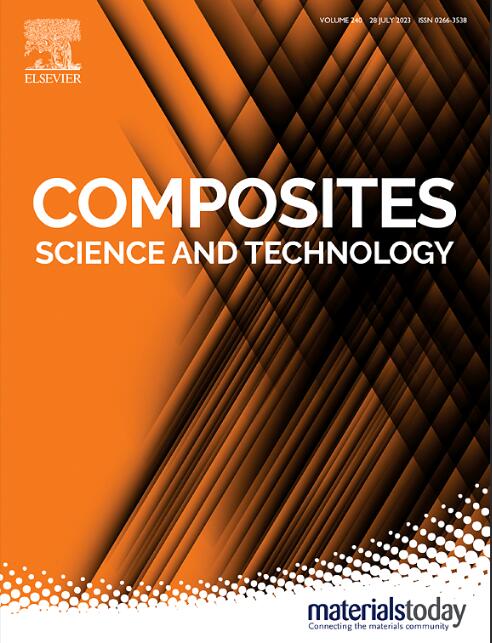Ultralight and high sensitive CA/TPU/PPy nanofiber aerogels with coaxial conductive structure for wearable piezoresistive sensors
IF 8.3
1区 材料科学
Q1 MATERIALS SCIENCE, COMPOSITES
引用次数: 0
Abstract
Flexible wearable electronics impose ever-more stringent demands on the design strategies for piezoresistive sensing materials. Nanofiber aerogels (NFAs) have emerged as a focal point in this field, attributed to their unique characteristics such as low density, extensive specific surface area, high porosity, and outstanding mechanical performance. Conventional methods for fabricating conductive NFA composites often entail complex procedures, including additional thermal annealing and carbonization, to establish three-dimensional conductive networks, which significantly hinder scalability and practical applications. To overcome this challenge, we propose a sustainable, cost-effective, and efficient hydrogen-bonded self-assembly drive strategy for designing conductive nanofiber networks with robust coaxial structures. During polymerization, pyrrole monomers were in situ polymerized onto cellulose acetate/thermoplastic polyurethane (CA/TPU) composite nanofibers through hydrogen-bonding, forming a roubst conductive shell layer while facilitating the mutual cross-linking of short nanofibers to establish a porous three-dimensional network. Benefiting from the nanofiber skeleton and multilevel pore structure, the resultant CA/TPU/PPy NFA (CTP-NFA) possesses an ultra-low volume density (30.77 mg cm−3) and remarkable mechanical properties (55.78 kPa at 80 % strain), enduring deformation under 1700 times its weight. Furthermore, the associated aerogel sensor exhibits ultra-high sensitivity (33.56 kPa−1), rapid response time (100 ms), and exceptional cycling stability (>5500 cycles of compression). Significantly, the NFA-based piezoresistive sensor precisely detects pressure signals as low as 30 Pa, enabling accurate monitoring of adult pulse waveforms. Given its superior performance, the resultant NFA presents substantial promise for applications in human health monitoring and human-computer interaction.

求助全文
约1分钟内获得全文
求助全文
来源期刊

Composites Science and Technology
工程技术-材料科学:复合
CiteScore
16.20
自引率
9.90%
发文量
611
审稿时长
33 days
期刊介绍:
Composites Science and Technology publishes refereed original articles on the fundamental and applied science of engineering composites. The focus of this journal is on polymeric matrix composites with reinforcements/fillers ranging from nano- to macro-scale. CSTE encourages manuscripts reporting unique, innovative contributions to the physics, chemistry, materials science and applied mechanics aspects of advanced composites.
Besides traditional fiber reinforced composites, novel composites with significant potential for engineering applications are encouraged.
文献相关原料
公司名称
产品信息
麦克林
Iron chloride hexahydrate
麦克林
Pyrrole
阿拉丁
N,N-Dimethylacetamide
阿拉丁
Polyvinylpyrrolidone
阿拉丁
Cellulose acetate
 求助内容:
求助内容: 应助结果提醒方式:
应助结果提醒方式:


